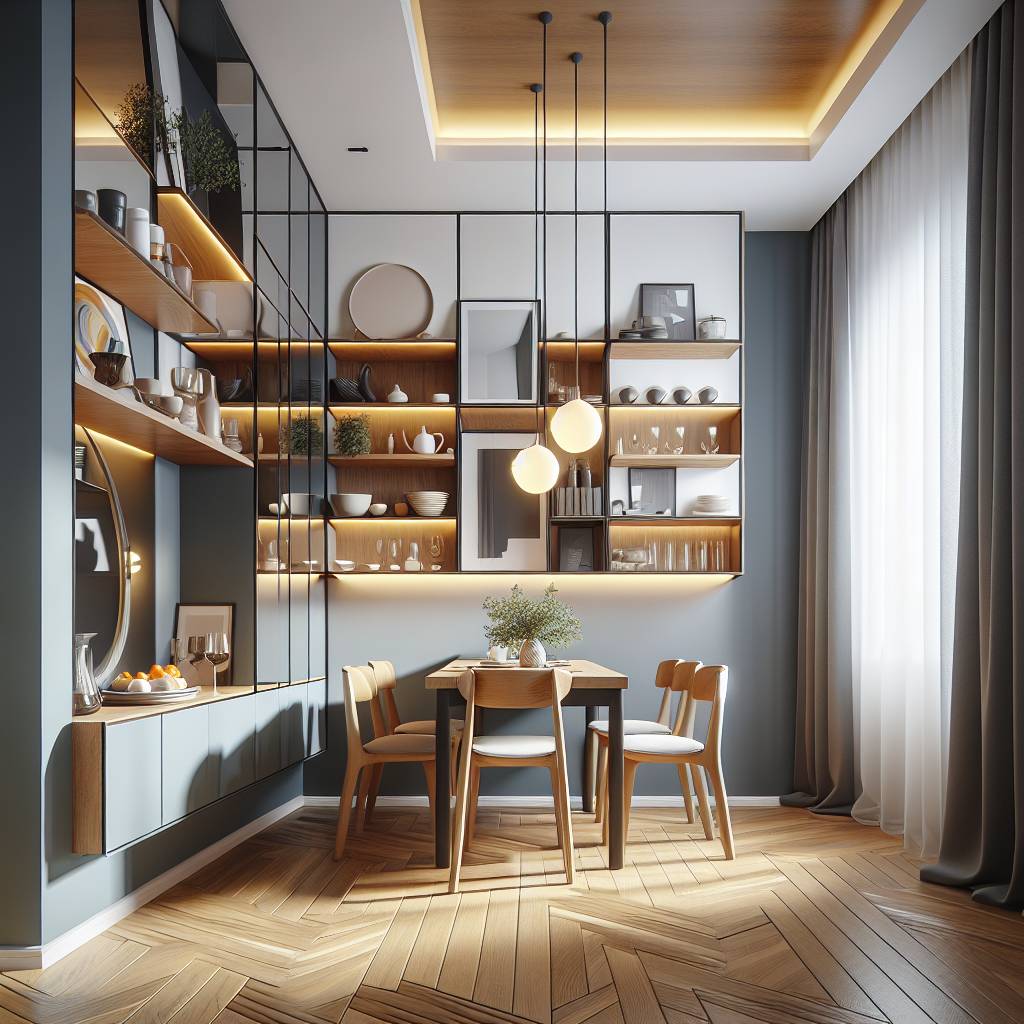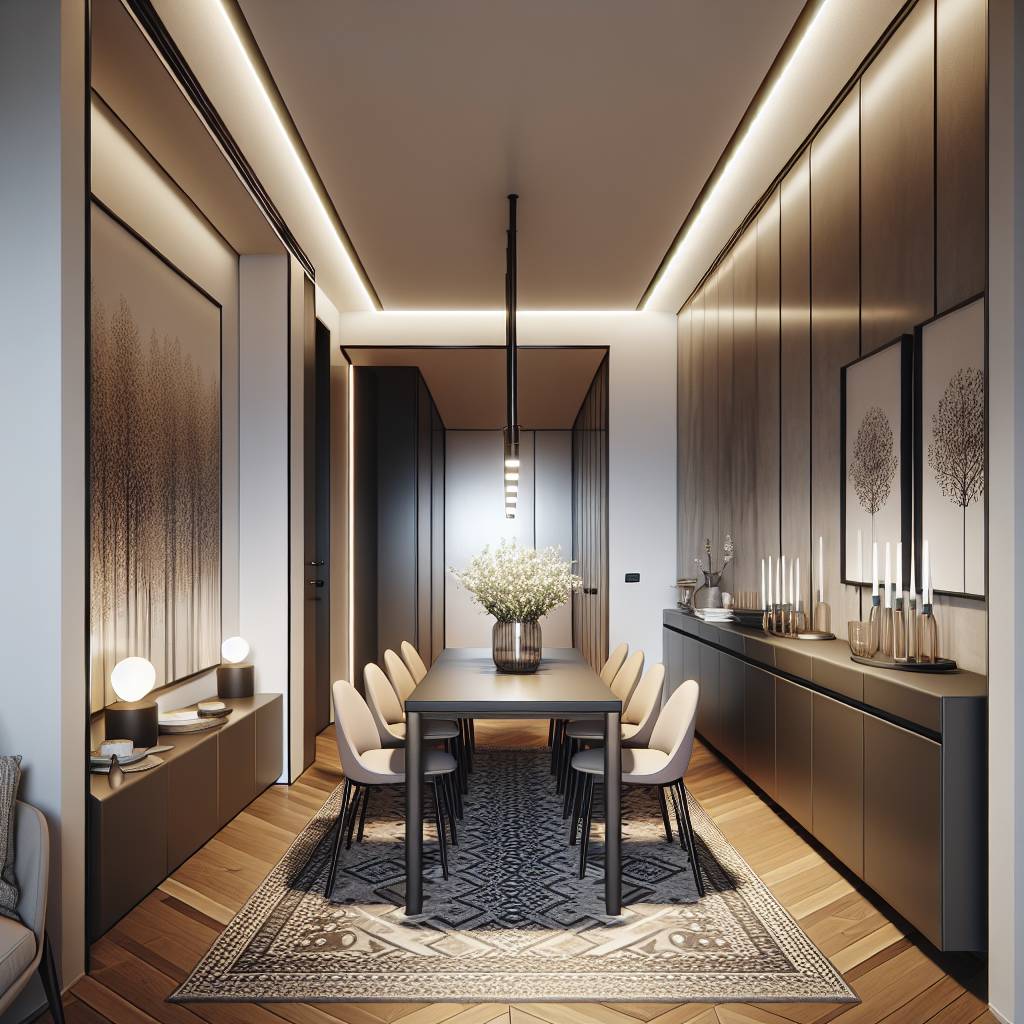Finding the right dining table height and size is crucial for comfort and posture. A well-suited dining table can transform your eating experience, preventing back strain and discomfort. In this guide, we’ll delve into the historical context of ergonomic furniture design to understand how modern-day dining tables, diners, and chair seat height have evolved to prioritize both functionality and aesthetics.
Historically, furniture has been crafted with a focus on practicality rather than ergonomics. However, as our understanding of human anatomy has advanced, so too has the design of dining chairs and dining sets. Today’s ergonomic dining tables are a result of this evolution, meticulously engineered to support natural body posture during meals. Understanding the historical progression of furniture design provides valuable insights into why current ergonomic standards are essential for creating comfortable living spaces.
Key Takeaways
- Understanding the standard dining table heights can help you choose a table that promotes comfortable dining and good posture.
- Consider the factors influencing ideal dining table size, such as room dimensions and the number of people you want to seat, to ensure a well-proportioned dining area.
- Weigh the pros and cons of various dining table sizes to find the right balance between functionality and aesthetics for your space.
- When selecting the right size dining table for your space, take into account both the available room dimensions and your lifestyle needs.
- Efficient space planning for dining tables and chairs can maximize comfort and accessibility, enhancing the overall dining experience.
- Familiarize yourself with the seating guide for different table sizes and shapes to create a welcoming and accommodating dining area.
Understanding Standard Dining Table Heights
Standard Heights Matter
The dining table height is crucial for ensuring comfort and ergonomics for diners during meals. Typically, standard dining table heights range from 28 to 30 inches. This range is carefully chosen to ensure that people can comfortably sit at the table without feeling cramped or straining their arms while eating.
In terms of ergonomics, the table height directly impacts how comfortable people feel when seated. A table that’s too low can cause individuals to hunch over, leading to discomfort in the back, shoulders, and dining chairs. On the other hand, a table that’s too high may require chairs with elevated seats or cushions for proper seating posture.
Varying Standards Across Countries
It’s essential to note that different countries may have varying standard heights for dining tables. For instance, in Europe, it’s common for dining tables to be slightly lower than those found in North America. Understanding these differences is important when selecting a dining table or considering custom-made options.
When choosing a dining table from an international supplier or looking at designs from various regions, being aware of these variations can help ensure you select a piece that aligns with your ergonomic needs and preferences.
Factors Influencing Ideal Dining Table Size
Number of People
When determining the ideal dining table size, it’s crucial to consider the number of people you want to accommodate. A larger family or frequent entertaining may require a bigger table and dining chairs, while a smaller household might suffice with something more compact. For example, if you often host dinner parties for eight people, a rectangular table measuring 96 inches long and 42 inches wide could be suitable.
Considerations:
- Family size and frequency of hosting gatherings
- Rectangular tables for accommodating more guests
Dining Space Dimensions
The dimensions of your dining space play a significant role in selecting the right table size. If your dining area is small or narrow, opting for a round or square table might be more practical than an elongated one that could make maneuvering around the room difficult. Similarly, if there are other pieces of furniture nearby such as cabinets or sideboards, as well as a table top, these should also factor into your decision.
Considerations:
- Room layout and available space
- Round or square tables for compact areas
Purpose of the Table
Another essential factor when choosing an ergonomic dining table is its intended purpose. Formal dining settings typically call for larger tables to accommodate elaborate place settings and centerpieces comfortably. On the other hand, casual gatherings may warrant a smaller table top that promotes intimacy and conversation among guests.
Pros and Cons of Various Dining Table Sizes
Pros of Larger Dining Tables
Larger dining tables offer more seating capacity and provide versatility for hosting guests during gatherings or dinner parties. With a larger surface area, these tables can comfortably accommodate more chairs, allowing families or hosts to entertain a greater number of people. This is especially advantageous for individuals who frequently host large groups or enjoy entertaining friends and family.
A larger dining table allows for the placement of additional serving dishes, centerpieces, or decorations without feeling cramped. This extra space provides an opportunity to create an aesthetically pleasing table setting that enhances the overall dining experience. For example, during festive occasions such as Thanksgiving or Christmas dinners, a spacious dining table offers ample room for displaying elaborate holiday spreads while still leaving enough space for diners.
Cons of Larger Dining Tables
Despite their advantages in terms of seating capacity and entertainment potential, larger dining tables may pose challenges in smaller living spaces where square footage is limited. These tables can overwhelm compact rooms and make them feel crowded if not proportionate to the available space. Navigating around a sizable dining table in a confined area might hinder traffic flow within the room.
Moreover, moving chairs in and out from under the table becomes more cumbersome with larger dimensions due to restricted clearance between furniture pieces. This limitation could lead to inconvenience when accommodating guests at mealtimes as it may impede seamless movement around the dining area.
Pros of Smaller Dining Tables
On the other hand, smaller dining tables are ideal for compact spaces where optimizing available square footage is essential. They contribute to creating an intimate and cozy atmosphere suitable for small households or apartments with limited floor space. In areas like breakfast nooks or studio apartments with open floor plans, smaller dining tables allow residents to enjoy meals without overwhelming the surroundings.
Furthermore, smaller dining tables promote closer interaction among diners by bringing them into closer proximity compared to larger settings. This setup fosters engaging conversations during meal times as everyone sits within comfortable speaking distance from one another.
Cons of Smaller Dining Tables
While small dining tables are beneficial in certain contexts due to their ability to fit snugly into tight quarters and foster intimacy among diners; they also have limitations regarding seating capacity when hosting events involving numerous guests simultaneously.
Selecting the Right Size Dining Table for Your Space
Measure Accurately
When choosing a dining table, it’s crucial to measure your dining area accurately. This ensures that the table fits comfortably within the available space. Leave enough room around the table for chairs to be pulled out without obstruction. For instance, if you have a rectangular dining area, consider a long and narrow dining table to make efficient use of the space.
Consideration should also be given to individuals’ needs and preferences when selecting a dining table size. If you often host large gatherings or have a big family, opting for a larger table would be more suitable. On the other hand, if your dining area is small or used by fewer people most of the time, a smaller-sized table top might be more appropriate.
Shape Matters
When deciding on an appropriate dining room tables, consider the shape of your dining area: whether it’s rectangular, square, or round. A square-shaped dining area may benefit from a pedestal table that can fit well into corners while providing enough seating capacity.
The width and proportion of the chosen dining room tables are essential factors in ensuring comfort during meals. The right size will contribute significantly to enhancing everyone’s overall dining experience, allowing them to feel comfortable and relaxed during meals.
Space Planning for Dining Tables and Chairs
Adequate Space
When arranging your dining space, it’s crucial to ensure there’s enough room between the edge of the table and any surrounding walls or furniture. This ensures that diners can comfortably navigate around the table without feeling cramped.
Allowing at least 36 inches of clearance between the back of a chair and any obstacles behind it is essential for ease of movement. This extra space also prevents chairs from hitting walls or other furniture when pulled out, offering a seamless dining experience.
Consider additional space requirements when planning your dining area. When chairs are pushed back after use, they need extra room to maneuver comfortably, so bear this in mind during your space calculations.
Seating Arrangement Considerations
The arrangement of dining chairs plays a significant role in optimizing comfort within your dining area. If you’re working with limited space, consider using stools instead of traditional chairs as they take up less floor space.
Interior designers often recommend round or oval tables for smaller spaces due to their ability to accommodate more diners while occupying less overall square footage. These tables eliminate sharp corners which can be hazardous in tight quarters.
When considering different types of dining sets, keep in mind that rectangular tables tend to work well in longer rooms, while square ones are better suited for square-shaped rooms. The shape and size of your dining area should guide your choice when selecting an appropriate table design.
Furniture Placement Tips
Properly positioning furniture within your dining room contributes significantly to creating an ergonomic environment conducive to comfortable meals and social gatherings. Ensure there is ample walking room around the table by avoiding overcrowding with too many pieces.
In terms of interior design principles, leaving sufficient open floor space around the dining set helps maintain balance within the room’s layout while preventing it from feeling cluttered or congested. This not only enhances visual appeal but also fosters a more relaxed atmosphere during meal times. Choose the Right Dining Room Table.
Seating Guide for Different Table Sizes and Shapes
Rectangular Tables
It’s crucial to allow approximately 24 inches of width per person. This ensures that everyone has enough space to sit comfortably without feeling cramped. The rectangular shape of the table means that each person needs a bit more room, especially if they are sitting along the longer sides.
Rectangular tables provide ample surface area for serving dishes and other items at the center, making them ideal for larger gatherings or family meals. They also fit well in long dining rooms or open-plan spaces where there is plenty of length but limited width.
For example:
- A 6-foot rectangular table can comfortably seat six people with three on each side.
- An 8-foot table can accommodate eight diners with four on each side.
Round Tables
Round tables generally require less space per person compared to rectangular ones due to their shape. Their lack of sharp corners makes it easier for people to move around and creates a more intimate dining experience since everyone is facing one another directly.
The absence of edges also allows you to squeeze in an extra chair when needed, making round tables perfect for smaller dining areas or cozy breakfast nooks. When choosing a round table, consider one with a diameter between 3–6 feet depending on how many people you want to accommodate.
For example:
- A 4-foot round table provides ample seating for four individuals.
- If you’re looking to host six diners, opt for a 6-foot round table instead.
Oval-Shaped Tables
Oval-shaped tables offer flexibility in seating arrangements and can accommodate more people than rectangular tables of the same length. The rounded edges make it easy for guests to slide into their seats without any awkward maneuvering around sharp corners while still providing sufficient elbow room during meals.
This type of table is an excellent choice if you frequently entertain guests or have large family gatherings as it offers generous seating capacity without sacrificing valuable floor space.
Counter Height versus Bar Height Dining Options
Counter Height
Counter height dining tables typically range from 34 to 36 inches high, providing a more casual dining experience. This height is suitable for both sitting on regular chairs and using taller stools. The slightly elevated position offers a comfortable and relaxed atmosphere, perfect for everyday meals or informal gatherings. It allows individuals to sit comfortably with their feet flat on the floor, promoting better posture during mealtime.
When choosing a counter height table, it’s important to consider the comfort of the seating options available. Regular chairs should allow individuals to sit with their knees at a comfortable angle, while bar stools need to be compatible with the table’s height. Ensuring that there is enough legroom between the seat bottom and the underside of the table is crucial for an enjoyable dining experience.
Bar Height
Bar height dining tables are taller, usually measuring around 40 to 42 inches in height. These tables are designed for standing or perching on bar stools rather than traditional chairs. The increased elevation creates a more dynamic setting, ideal for socializing or entertaining guests in a less formal environment.
The extra few inches in height provide an elevated perspective, making bar-height tables great for open spaces where people can move around freely without feeling confined by seating arrangements. However, it’s essential to keep in mind that this added elevation may require different types of seating options like tall barstools instead of standard chairs.
When deciding between counter height and bar height dining options, it’s crucial to consider not only personal preferences but also practicality and accessibility factors related to each type of furniture arrangement.
Ideal Dimensions for Varied Seating Capacities
Round Tables
A 48-inch round table is perfect for four people, providing ample space for each diner. On the other hand, a 60-inch round table offers more room and can comfortably seat six individuals. These sizes ensure that everyone has enough elbow room to enjoy their meals without feeling cramped.
Round tables are versatile and suitable for various dining areas, from cozy breakfast nooks to spacious dining rooms. Their circular shape promotes easy conversation and creates an intimate dining experience. The smaller 48-inch option is ideal for smaller spaces or as a casual dining setup, while the 60-inch table is great for larger gatherings or families with more members.
Rectangular Tables
For those who prefer rectangular tables, a 72-inch long table provides seating for six to eight people. Choose the Right Dining Room Table size allows each diner to have enough space without feeling crowded during meals. Moreover, larger rectangular tables measuring around 96 inches in length can comfortably accommodate eight to ten individuals.
Rectangular tables are well-suited for elongated dining areas such as formal dining rooms or open-plan spaces where they can define the eating zone within the room. They offer a classic look and provide plenty of surface area for serving dishes and centerpieces.
When choosing between round and rectangular options, consider the available space in your dining area as well as your preferred aesthetic. Both shapes have their unique advantages—round tables promote interaction among diners due to their lack of sharp corners, while rectangular ones fit seamlessly into linear spaces such as narrow dining rooms or galley kitchens.
Closing Thoughts
You’ve now gained a comprehensive understanding of the factors influencing the ideal dining table size and height for your space. Armed with this knowledge, you can confidently select the right dining table that not only fits your space but also enhances your dining experience. Remember, it’s not just about the dimensions; it’s about creating a space where memories are made, conversations flow, and laughter fills the air. So, go ahead, measure your space, consider your needs, and choose a dining table that becomes the heart of your home.
Now that you’re equipped with the know-how, it’s time to put it into action. Measure your space, envision the perfect dining experience, and find a table that brings it to life. Here’s to finding the ideal dining table that not only fits your space but also becomes the centerpiece of cherished moments and delightful gatherings.
Frequently Asked Questions
What is the standard height for a dining table?
The standard height for a dining table is around 30 inches. This provides a comfortable seating position for most people and allows for easy interaction during meals.
How do I choose the right size dining table for my space?
Consider the dimensions of your room and how much space you want to allocate to the dining area. A good rule of thumb is to leave at least 36 inches between the edge of your table and any walls or other furniture.
What are the pros and cons of different dining table sizes?
Larger tables accommodate more guests but require more space, while smaller tables are cozier but limit guest numbers. It’s essential to balance these factors based on your specific needs and available space.
Should I opt for a counter-height or bar-height dining option?
Counter-height tables are typically around 34-36 inches high, while bar-height ones range from 40-42 inches. Consider whether you prefer an informal, relaxed feel (counter) or a more formal, elevated setting (bar).
How can I determine the ideal seating capacity for my dining table?
To determine ideal seating capacity, allow approximately 24 inches per person along the length of rectangular tables. For round tables, think about allowing at least 26-30 inches per person to ensure everyone has enough elbow room.






